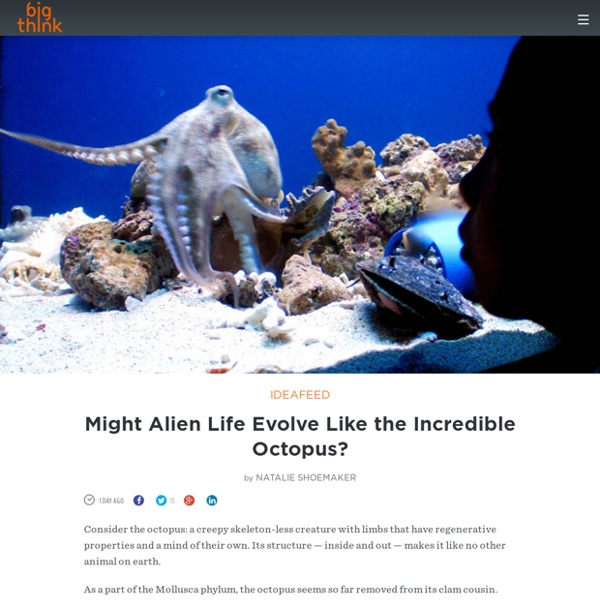Tree Encyclopedia 2 clicks to really open
Trees have three principle features that distinguish them from all other plants. First, they have a woody stem, roots and branches which do not die back in winter, but continue to grow year after year. From the moment of its germination, a tree remains visible; from the tallest Sequoia to the smallest garden fruit tree, this principle of growth remains constant. Trees live longer than any other organism on earth. Trees commonly live more than 1,000 years, and many grow considerably older. A bristlecone pine, Pinus longaeva, at Schulman Grove in California has been documented both by core drilling (a pencil-thin core is taken from the tree’s trunk, and the rings are counted) and by carbon-dating as being 4,700 years old.
An Epochal Discovery: A Habitable Planet Orbits Our Neighboring Star
One hundred and one years ago this October, a Scottish astronomer named Robert Innes pointed a camera at a grouping of stars near the Southern Cross, the defining feature of the night skies above his adopted Johannesburg. He was looking for a small companion to Alpha Centauri, our closest neighboring star system. Hunched over glass photographic plates, Innes teased out a signal. Across five years of images, a small, faint star moved, wiggling on the sky. It shifted just as much as Alpha Centauri, suggesting its fate was intertwined with that binary system. But this small star was closer to the sun than Alpha.
Networks of Genome Data Will Transform Medicine
Breakthrough Technical standards that let DNA databases communicate. Why It Matters Your medical treatment could benefit from the experiences of millions of others.
Beautiful World of Sea Slugs-click on pic
On land, slugs are far from nature's most beautiful creatures--but underwater, the family of shell-less creatures known as nudibranchs come in bright neons, glowing pastels, and vibrant primary colors. The 3,000 different kinds of nudibranchs get their color from the food they eat--and, in some cases, secrete the poisons from their prey to defend themselves against predators. The Fried Egg Nudibranch gets its name from the perfect yellow-and-white circles that line its back.
Your Favorite Housewares Are Spewing Poison Dust Inside Your Home
People buy the nicest homes they can afford. They spend years—sometimes decades—pouring money into nest-feathering by stocking up on creature comforts. It’s no wonder we spend 90 percent of our lives indoors. Like George Carlin said, it’s where all our stuff is.
We're More than Stardust — We're Made of the Big Bang Itself
Transcript Anna Frebel: The work of stellar archaeology really goes to the heart of the "we are stardust" and "we are children of the stars" statement. You’ve probably heard it all but what does it actually mean?
Nudibranchs - The Flamboyant Sea Slug
nicoboxethai/CC BY 2.0 Nudibranch, or what we usually call sea slugs, blow my mind. Ever since spotting one for myself during a tide pool trip about a year ago, I've been fascinated with these creatures. I think of them as the drag queens of the sea: flashy stand-outs that are always dressed to the nines. The one I found is a Hermissenda crassicornis -- the flashy little thing pictured below with bright pinkish-orange cerata waving like a feather boa and neon blue outlines around its tentacles.
Pacific Islanders appear to be carrying the DNA of an unknown human species
Hints of an unidentified, extinct human species have been found in the DNA of modern Melanesians - those living in a region of the South Pacific, northeast of Australia. According to new genetic modelling, the species is unlikely to be Neanderthal or Denisovan - two ancient species that are represented in the fossil record - but could represent a third, unknown human relative that has so far eluded archaeologists. "We’re missing a population, or we’re misunderstanding something about the relationships," Ryan Bohlender, a statistical geneticist from the University of Texas, told Tina Hesman Saey at Science News. Bohlender and his team have been investigating the percentages of extinct hominid DNA that modern humans still carry today, and say they’ve found discrepancies in previous analyses that suggest our mingling with Neanderthals and Denisovans isn’t the whole story.
Monkey teeth hint at a miraculous marine migration to North America
Scientists have long thought that monkeys first ventured from South America into North America no earlier than about 4 million years ago, when the two continents merged. But seven teeth unearthed in Panama may change that story. These monkey teeth were discovered encased in 21-million-year-old rocks. This suggests that the primates accomplished the impossible: they crossed the more than 100 miles of ocean that separated South America from North America at the time. These prehistoric monkeys, which probably looked like today's capuchin monkeys, are the only mammals known to cross this watery boundary so early, says Jonathan Bloch. Dr.
The adorable “sea bunny” - a nudibranch
It’s round, and fluffy and has wiggly little ears! Sort of. These little sea creatures, affectionately dubbed “sea bunnies” have recently become social media celebrities.
Ross Sea Designated as World’s Largest Marine Protected Area
Today’s closing of the Commission for the Conservation of Antarctic Marine Living Resources (CCAMLR) meeting made history by declaring the largest marine protected area on the planet in Antarctica’s Ross Sea. This marks the first time that CCAMLR’s 24 member countries and the European Union reached consensus to protect this huge area of the Southern Ocean after similar proposals were blocked for the past five years. The 1.55 million square kilometer marine protected area will provide critical habitat, including breeding and foraging grounds, for a multitude of penguins, seals, krill, whales, and other species. It will also implement crucial policies needed to guide human activities such as fishing, shipping, and tourism, safeguarding this region, one of the last pristine oceans left on Earth. This would not have been possible without Russia joining with other countries to pass the proposal. Andrea Kavanagh directs Pew’s Antarctic and Southern Ocean work.



